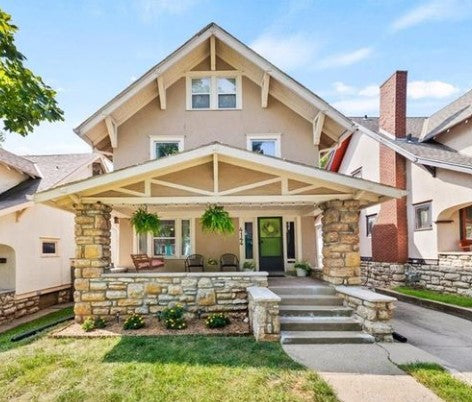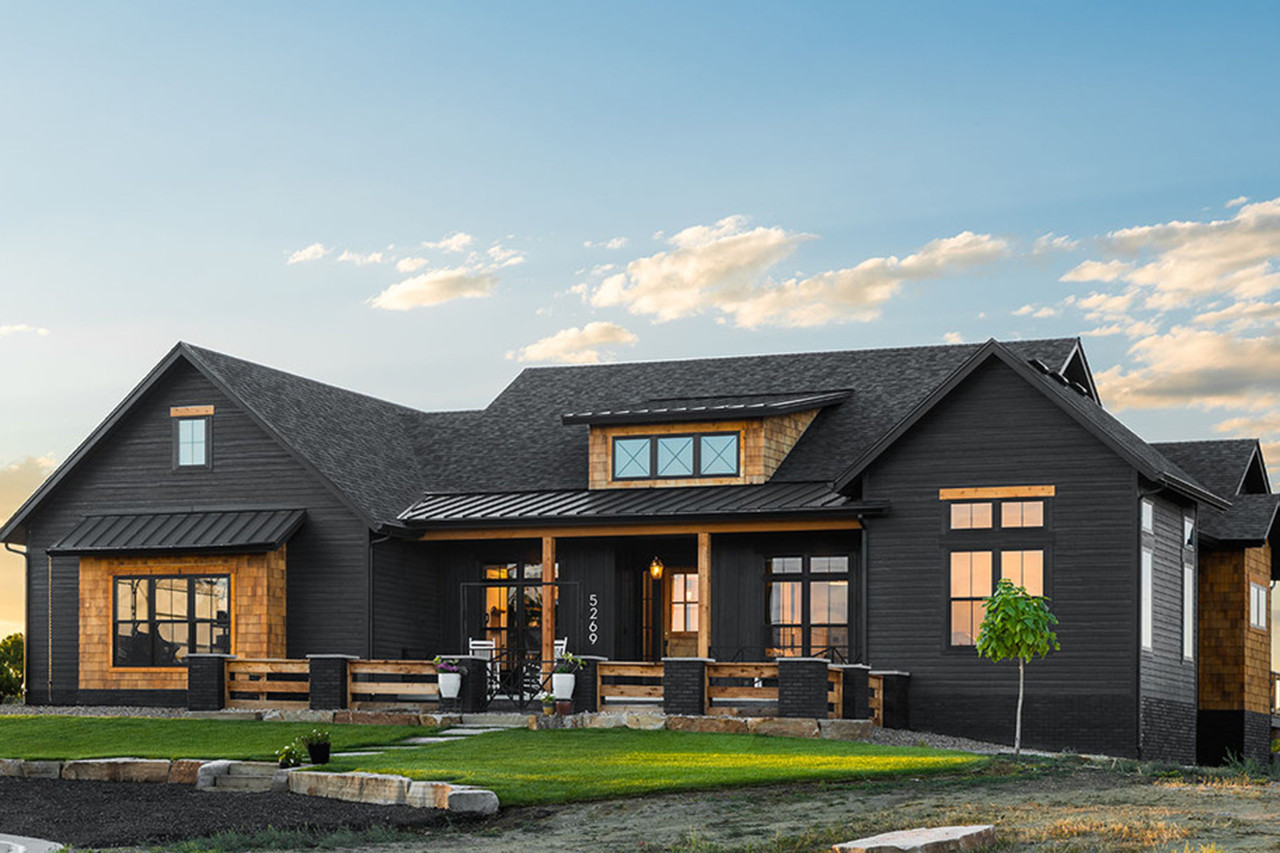Beautiful craftsman style house Project Showcases
The Function of Arts & & Crafts Architects in Elevating Architectural Services in Residential Layout
Arts and Crafts architects significantly affect property style via their commitment to workmanship and sustainability. They focus on handmade information and all-natural products, which enhance both aesthetics and community identity. By entailing customers in the layout process, these architects produce one-of-a-kind home that reverberate with individual preferences. This strategy elevates questions concerning the future trajectory of property architecture and its potential impact on area dynamics. craftsman style house. What exists in advance for this ageless style viewpoint?

The Principles of Arts and Crafts Architecture
The essence of Arts and Crafts architecture hinges on its commitment to craftsmanship and simplicity. This architectural motion arised in the late 19th century as a feedback to automation, stressing the value of handcrafted details and all-natural products. The concepts of Arts and Crafts architecture focus on performance and consistency with the atmosphere. Frameworks generally include low-pitched roof coverings, broad eaves, and subjected rafters, advertising a feeling of unity with nature.
Artisans played a considerable function in this design, usually integrating decorative components like discolored glass, tiles, and woodwork, which show local craftsmanship. The shade combination has a tendency to be natural and subdued, allowing structures to mix effortlessly into their surroundings. In addition, the layout urges open flooring plans and communal rooms, fostering a sense of togetherness. In general, the principles of Arts and Crafts architecture commemorate the appeal of simpleness and the value of human connection to both nature and area.

Sustainable Practices in Residential Layout
While the need for ecologically accountable living remains to expand, sustainable practices in property style have gotten substantial traction amongst architects and homeowners alike. Architects are significantly including energy-efficient technologies and sustainable materials right into their designs, intending to decrease carbon impacts and enhance power preservation. Approaches such as passive solar style, eco-friendly roofing systems, and rainwater harvesting systems are coming to be typical components of modern-day household architecture.
Furthermore, the option of in your area sourced materials reduces transportation discharges and sustains regional economies. Emphasis on natural light and ventilation not only boosts indoor air quality but also lowers dependence on synthetic lights and environment control systems. These lasting practices show a commitment to maintaining the environment while supplying house owners with comfortable, reliable living areas. As understanding of ecological issues expands, the integration of sustainability in property style is poised to end up being a defining quality of contemporary architecture, led by the concepts developed by Arts and Crafts architects.
Customization and Personalization in Home Layout
Customization and personalization in home design have actually emerged as vital fads in action to the expanding need for distinct living settings that reflect private tastes and way of livings. Homeowners increasingly look for to customize areas that reverberate with their individualities, causing a more purposeful link with their home. craftsman style house. This movement encourages architects to involve customers in the style procedure, cultivating cooperation that assures the last outcome embodies the property owner's vision
Elements such as bespoke designs, custom-made products, and tailored surfaces enable for a varied range of expressions in domestic style. Arts and Crafts architects play a critical function in this development, highlighting workmanship and quality. Their emphasis on integrating artistic components with performance assurances that each home is not only visually pleasing yet likewise distinctly fit to the residents' needs. This focus on customization boosts the total domestic experience, developing rooms that are both personal and long-lasting.
The Influence of Arts and Crafts Architects on Area Visual Appeals
As areas evolve, the impact of Arts and Crafts architects considerably shapes their visual landscape. By emphasizing handcrafted details, all-natural materials, and conventional construction methods, these architects develop homes that resonate with their environments. Their layouts typically incorporate neighborhood go plants, structures, and shades, promoting a sense of consistency between constructed settings and nature.
The Arts and Crafts activity advertises neighborhood identity through building continuity. By motivating home owners to embrace similar style principles, neighborhoods create a natural character that improves aesthetic appeal. This architectural uniformity not just enriches the aesthetic experience however additionally infuses a feeling of satisfaction among residents.
The emphasis on sustainability and workmanship in Arts and Crafts architecture straightens with modern-day values, making these designs pertinent in modern settings. Eventually, Arts and Crafts architects add significantly to the general elegance and cultural integrity of areas, leaving an enduring effect on their aesthetic tradition.

Future Fads in Arts and Crafts Architecture
With an increasing focus on sustainability and personalization, future patterns in Arts and Crafts architecture are positioned to mix typical workmanship with modern innovation - craftsman style house. Architects are most likely to focus on environment-friendly products, utilizing redeemed timber and all-natural stone to improve the sustainability of household styles. The integration of smart home modern technology will come to be commonplace, enabling personalized living experiences without jeopardizing visual honesty
Furthermore, the rebirth of artisanal methods will certainly promote a renewed recognition for handcrafted elements, such as bespoke cabinets and personalized tile job. Future styles may likewise show a focus on community-oriented rooms, motivating interaction and connection amongst homeowners. Exterior living locations will certainly obtain prestige, flawlessly integrating nature into the home setting. As Arts and Crafts architecture advances, it will continue to honor its roots while adapting to modern requirements, developing unified rooms that mirror individual values and lifestyles.
Frequently Asked Concerns
What Inspired the Arts and Crafts Motion in Architecture?
The Arts and Crafts movement in architecture was influenced by a reaction versus automation, emphasizing handcrafted high quality, natural products, and a go back to standard craftsmanship, intending to continue reading this create harmonious, useful spaces that commemorated creativity and individuality.
Just how Do Arts and Crafts Architects Collaborate With Customers?
Arts and crafts architects collaborate with clients through open discussion, prioritizing personal requirements and aesthetic appeals. They highlight craftsmanship and sustainability, promoting a collaboration that his comment is here incorporates the customer's vision with the designer's proficiency in style and materials.
What Products Are Frequently Made Use Of in Arts and Crafts Homes?
Common products in Arts and Crafts homes consist of natural wood, stone, and brick, emphasizing workmanship and natural visual appeals. These components produce a cozy, inviting environment, mirroring the motion's commitment to quality and simpleness in layout.
How Do Arts and Crafts Designs Improve Indoor Living Spaces?
Arts and Crafts styles improve interior living rooms by advertising natural light, open layout, and handcrafted information. These components promote a cozy, welcoming ambience, urging a connection between citizens and their environments through thoughtful, useful visual appeals.
What Are Some Famous Examples of Arts and Crafts Architecture?
Famous instances of Arts and Crafts architecture consist of the Gamble Residence, Greene and Greene's work of art in The golden state, and the Robie House by Frank Lloyd Wright. These structures display handcrafted information and harmony with nature, specifying the motion's significance.